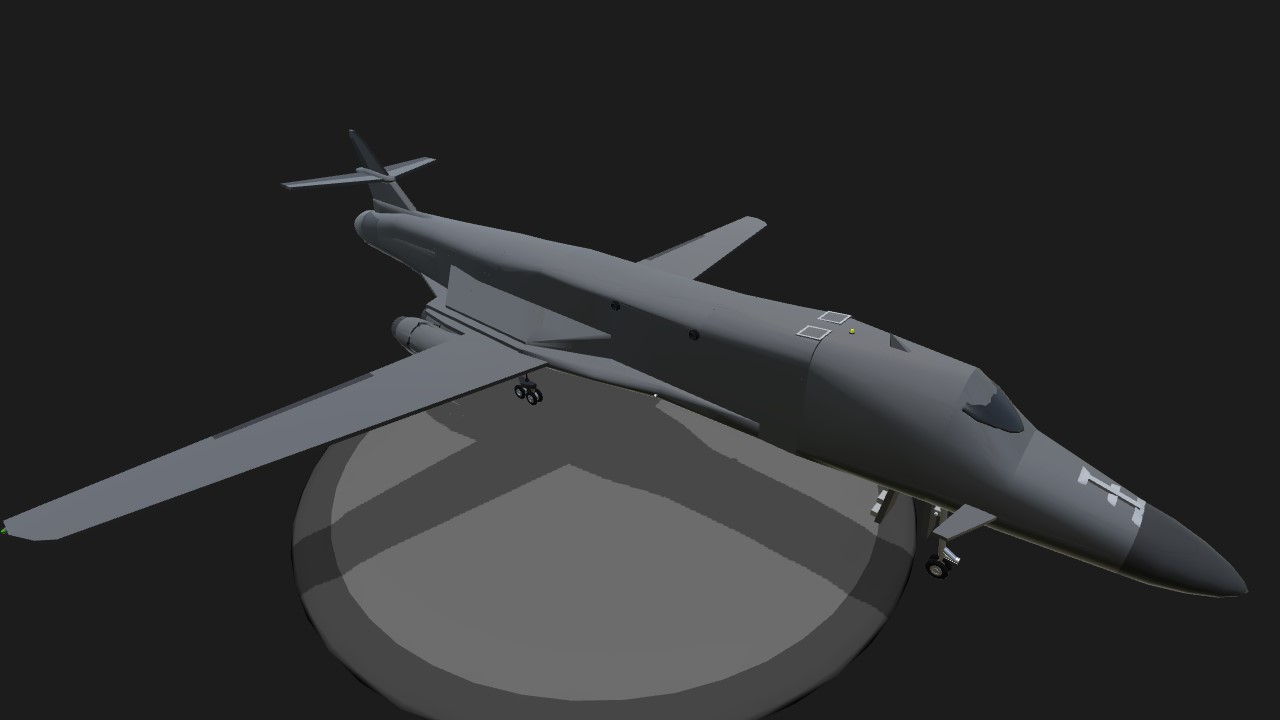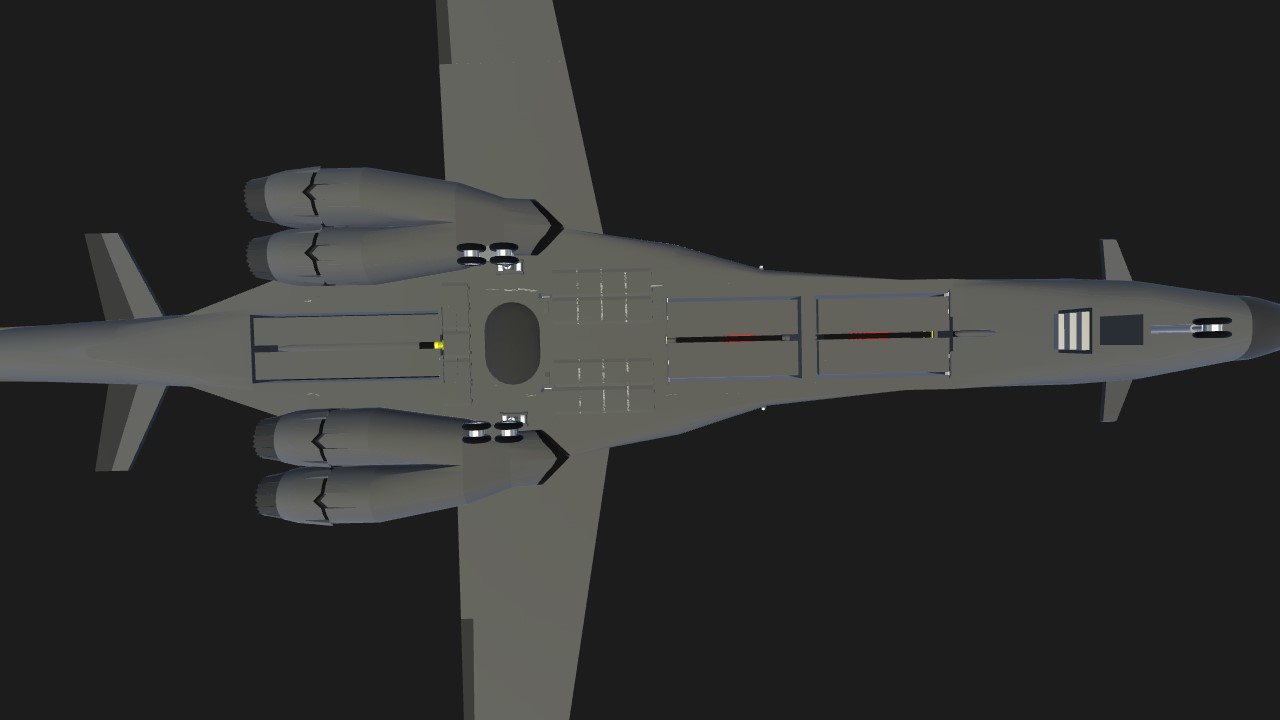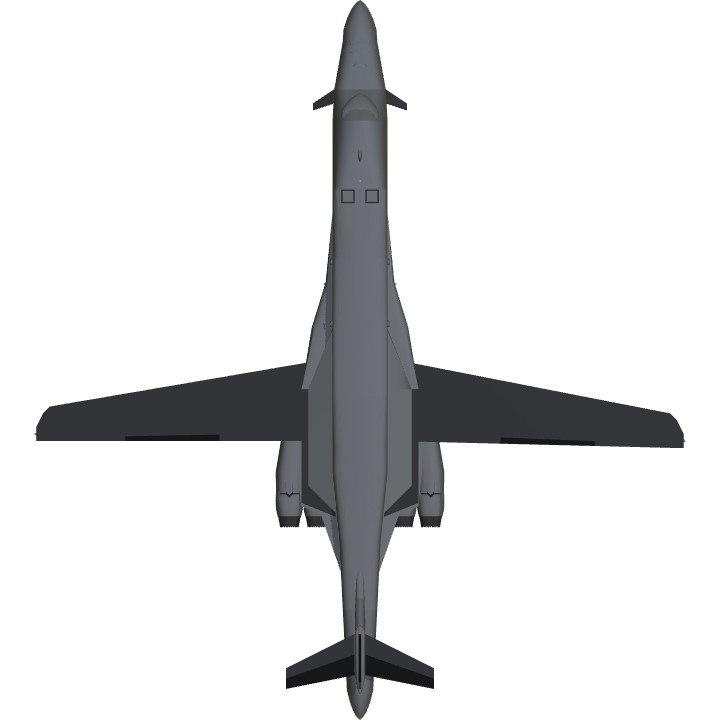I'll be posting a design of just the rotary in a few minutes!
Functional B-1B bomber with many details including navigation lights, boarding ladder, custom landing gear, three weapon bays (two rotary), and wing angle adjustment. Takeoff at 200mph and top speed of 900mph. This bomber can go farther than many other planes
1+vtol (landing gear)
2+vtol (boarding ladder)
3+vtol (wing angle)
4+vtol (open all weapon bays)
5+vtol (rotate inferno missiles)
6+vtol (rotate bomb 25's)
Equipped with 8 air-to-ground missiles, 4 bomb 25's, and 1 bomb 50. For both missiles and bombs, vtol down for first set, then vtol up for second set. Rotate missiles after 4th shot and rotate bombs after 2nd release. You can copy the rotaries and replace the other to carry another bomb rotary or another missile rotary. You can replace the rotaries with other weapons systems or additional fuel tanks
The Rockwell B-1 Lancer[N 1] is a four-engine supersonic variable-sweep wing, jet-powered heavy strategic bomber used by the United States Air Force (USAF). It was first envisioned in the 1960s as a supersonic bomber with Mach 2 speed, and sufficient range and payload to replace the Boeing B-52 Stratofortress. It was developed into the B-1B, primarily a low-level penetrator with long range and Mach 1.25 speed capability at high altitude. It is commonly called the "Bone" (originally from "B-One").
Designed by Rockwell International (now part of Boeing), development was delayed multiple times over its history due to changes in the perceived need for manned bombers. The initial B-1A version was developed in the early 1970s, but its production was canceled, and only four prototypes were built. The need for a new platform once again surfaced in the early 1980s, and the aircraft resurfaced as the B-1B version with the focus on low-level penetration bombing. However, by this point, development of stealth technology was promising an aircraft of dramatically improved capability. Production went ahead as the B version would be operational before the "Advanced Technology Bomber" (which became the B-2 Spirit), during a period when the B-52 would be increasingly vulnerable. The B-1B entered service in 1986 with the USAF Strategic Air Command (SAC) as a nuclear bomber.
In the early 1990s, following the Gulf War and concurrent with the disestablishment of SAC and its reassignment to the newly formed Air Combat Command (ACC), the B-1B was converted to conventional bombing use. It first served in combat during Operation Desert Fox in 1998 and again during the NATO action in Kosovo the following year. The B-1B has supported U.S. and NATO military forces in Afghanistan and Iraq. The USAF had 66 B-1Bs in service in September 2012. The B-1B is expected to continue to serve into the 2030s, with the Long Range Strike Bomber to start supplementing the B-1B in 2030. -Wikipedia
Specifications
Spotlights
- TheAceOwl 8.1 years ago
- ChiChiWerx 8.1 years ago
- NativeChief1492 8.1 years ago
General Characteristics
- Predecessor Rockwell B-1B Lancer
- Successors 1 airplane(s)
- Created On iOS
- Wingspan 77.5ft (23.6m)
- Length 85.7ft (26.1m)
- Height 20.9ft (6.4m)
- Empty Weight 34,744lbs (15,759kg)
- Loaded Weight 60,467lbs (27,427kg)
Performance
- Power/Weight Ratio 2.229
- Wing Loading 77.4lbs/ft2 (378.0kg/m2)
- Wing Area 781.0ft2 (72.6m2)
- Drag Points 11378
Parts
- Number of Parts 233
- Control Surfaces 5
- Performance Cost 1,399






Thanks, it took some head scratching to figure out how to build it @TheOwlAce
Love this aircraft.
@GhostHTX here's that plane I was talking about